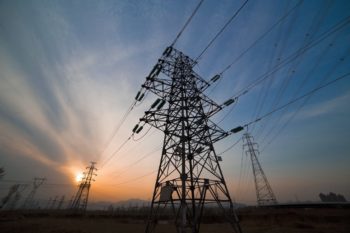 The situation with our most hated energy asset
The situation with our most hated energy asset
Australia’s big four banks are fighting over themselves to turn down the chance to profit from coal loans and tell the world.
Months ago, Westpac went on a low-coal diet, declaring like a kind of vegan-keto-banker that they won’t consider a loan unless the coal mined has at least 6,300 kilocalories per kilogram.
Presumably, they will lose weight, or at least lighten up by a few shareholders.
Last week our National Australia Bank announced they are waiting for the carbon capture fairy to conquer some laws of chemistry and economics before they finance coal mines again. (Though they limit themselves to spurning only new customers and “thermal coal” in a kind of have-cake-eat-half-the-cake policy.)
But while the small-fish Australian banks advertise their doogooder star status, financial institutions in Canada are putting $2.9 billion towards building new coal plants overseas.
And in the last three years, Chinese banks have casually smashed $630 billion dollars into coal. (Notably, even the Chinese don’t want to put money into Adani coal in Australia, the political environment here is that bad.)
The rest of the world is definitely not watching the Australian Banks. Global coal consumption has been flat for a few years, but in a new report, the IEA predicts coal use will grow again ’til 2022, at least in a subdued way.
This appears to be singlehandedly due to Narendra Modi, who announced in August that the rest of India should get electricity and by next year, so 40 million households are to be connected at a cost of $2.5 billion USD.
Soak in those IEA Key Energy Statistics 2017:

Most of the renewables above will be in the form of underwater turbines on steep slopes near large bodies of water. The other on this graph is not solar PV or tidal power, but Nuclear.
Read rest at JoNova

















The Cost of Wind Energy in the U.S. – AWEA
https://www.awea.org/falling-wind-energy-costs
Wind energy is one of the most affordable forms of electricity today, with utility executives noting “Wind prices are extremely competitive right now, offering lower costs than other possible resources”. Recent improvements in turbine technology have reduced the cost of wind energy, allowing electricity consumers and utilities
.
The cancellations make it likelier that China will meet its goal of limiting its total coal-fired power generation capacity to 1,100 gigawatts by 2020. … Its coal plants now run at about half of capacity, and new sources of power, like wind, solar and nuclear, are coming online at a fast clip.Jan 18, 2017
China Cancels 103 Coal Plants, Mindful of Smog and Wasted Capacity
https://www.nytimes.com/2017/01/18/world/…/china-coal-power-plants-pollution.html
.
India just got $400 million of financing for new solar and wind energy …
https://www.cnbc.com/…/india-just-got-400-million-of-financing-for-new-solar-and-…
14 hours ago – Renewable energy in India is set to get a $400 million boost through a joint initiative backed by the European Investment Bank (EIB) and India’s Yes Bank. In an announcement Tuesday, the EIB said that Yes Bank would manage the co-financing program for the development of new solar and wind facilities …
It’s smarter to invest in renewable energy in India than the US — Quartz
https://qz.com/984486/its-smarter-to-invest-in-renewable-energy-in-india-than-the-us/
May 17, 2017 – In 2015, India even held its first conference on renewable energy investment, where private companies committed some $200 billion in investments into green energy. These included large investments into solar and wind power by companies such as SunEdison Energy, ReNew Power, and the Adani …
All this anti fracking anti coal anti drilling keep it in the ground nit-wits all need to spend their winters in a mud hut with open glassless windows and only bit of cloth as a front door all winter long without a fire to keep them warming and cook their veggies and lets see how like live to live as they would force us all to live and may it snow 2 feet or more